
Students will be able to identify and explain the differences between different economic systems (Market, Mixed, Command, Communist, Socialist).
- Subject:
- Financial Literacy
- Material Type:
- Lesson Plan
- Author:
- Utah Lesson Plans
- Date Added:
- 04/26/2024

Students will be able to identify and explain the differences between different economic systems (Market, Mixed, Command, Communist, Socialist).

Second Edition
Short Description:
The Economics of Food and Agricultural Markets is written for applied intermediate microeconomics courses.
Long Description:
The Second Edition of Economics of Food and Agricultural Markets is written for applied intermediate microeconomics courses. The book showcases the power of economic principles to explain and predict issues and current events in the food, agricultural, agribusiness, international trade, labor markets, and natural resource sectors. The field of agricultural economics is relevant, important and interesting. The study of market structures, also called industrial organization, provides powerful, timely, and useful tools for any individual or group making personal choices, business decisions, or public policies in food and agricultural industries.
Readers will benefit from a large number of real-world examples and applications of the economic concepts under discussion. The book introduces economic principles in a succinct and reader-friendly format, providing students and instructors with a clear, up-to-date, and straightforward approach to learning how a market-based economy functions, and how to use simple economic principles for improved decision making. The principles are applied to timely, interesting, and important real-world issues through words, graphs, and simple algebra and calculus. This book is intended for students who study agricultural economics, microeconomics, rural development and/or environmental policy.
Word Count: 49992
(Note: This resource's metadata has been created automatically by reformatting and/or combining the information that the author initially provided as part of a bulk import process.)
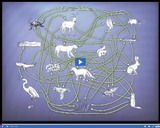
This detailed food web depicts a more complex flow of energy in a forest ecosystem.
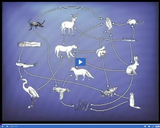
This simple food web depicts the flow of energy in a forest ecosystem.
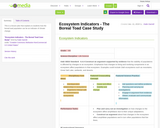
This is a lesson plan that explains to students how the boreal toad population can be an indicator of climate change.
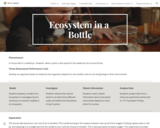
A Powerpoint guided lesson about ecosystems and the role of producers and consumers (April Mitchell)
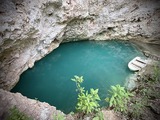
This lesson plan utilizes the use of mobile devices for digital photography to enhance student learning. Students will be learning about Ecoturism, comparing and contrasting geographical landscapes in different parts of Latin America. This lesson is meant to be taught in Spanish, but can be adapted to other languages. (Thumbnail image: Cenote Santa Cruz, Homun, Yucatan, Mexico, Abril 2021, by Sharon Hahn Darlin: CC-BY-2.0 CC, from Wikimedia Commons)

This EdCamp is a collaboration between Alpine, Provo, Nebo, and Juab school districts and Utah Valley University. An EdCamp is a free public events that leverages the knowledge and experiences of attendees by allowing educators to collaboratively determine topics for discussion the day of the event. Educators facilitate sessions by using their experiences to drive conversation with their peers. Educators are encouraged to find EdCamp sessions that best meet their needs to maximize learning.

Two professors in Instructional Psychology and Technology at BYU will discuss successfully designing effective and engaging learning environments with graduate-level open textbooks.

Shilpa, the head of customer success at Scribble, led a discussion about the challenges faced when coaching teachers on using AI and teaching research and writing skills, and introduced Scribble, an app designed to provide an infrastructure for research and writing. She also discussed the unique features of Reese, a research assistant tool integrated into Scribble, and demonstrated the Scribble platform, focusing on the teacher view and the assignment creation process. The conversation ended with discussions on the training and implementation of the tool, with a focus on its use in classrooms, and the potential role of school librarians in supporting its implementation.

List of competencies that outline best practices for digital teaching and learning in the classroom. This list is also the requirements for the Ed Tech Endorsement.
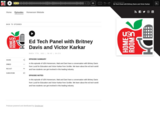
In this episode of UEN Homeroom, Matt and Dani have a conversation with Britney Davis from Lucid for Education and Victor Karkar from Scrible. We learn about the ed tech world and how students can get involved in this leading industry.
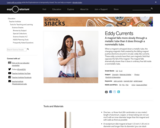
In this activity related to magnetism and electricity, learners discover that a magnet falls more slowly through a metallic tube than it does through a nonmetallic tube. Use this activity to illustrate how eddy currents in an electrical conductor create a magnetic field that exerts an opposing force on the falling magnet, which makes it fall at a slower rate. This activity guide also includes demonstration instructions involving two thick, flat pieces of aluminum to illustrate the same principle.
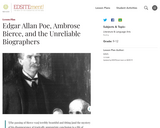
We are naturally curious about the lives (and deaths) of authors, especially those, such as Edgar Allan Poe and Ambrose Bierce, who have left us with so many intriguing mysteries. But does biographical knowledge add to our understanding of their works? And if so, how do we distinguish between the accurate detail and the rumor; between truth and exaggeration? In this lesson, students become literary sleuths, attempting to separate biographical reality from myth. They also become careful critics, taking a stand on whether extra-literary materials such as biographies and letters should influence the way readers understand a writer's texts.

This video explains how to edit your profile in Pressbooks.

Learn how to add, remove, or rearrange questions within a Derivita assignment.

This video provides practical tips on the art of editing and when to use them in your film projects. For more Media Education programming, please visit www.utahfilmcenter.org/education

In this video from Science City, meet Eduardo Torres-Jara, a postdoctoral associate in electrical engineering and computer science at the MIT Artificial Intelligence Lab. He describes his work on innovative robots that use tactile feedback to locate and grasp objects.

The Education Hazards of Generative AI provides a basic scientific overview of how largelanguage models (LLMs) work and connects this knowledge to practical implications for educators. This document is intended as a resource for teachers, principals, school district administrators, parents, students, policymakers, and anyone else thinking about using generative AI for educational purposes.

Application for the Utah Education Technoloty endorsement